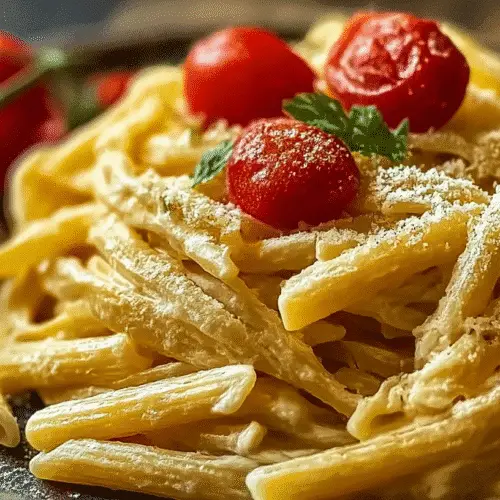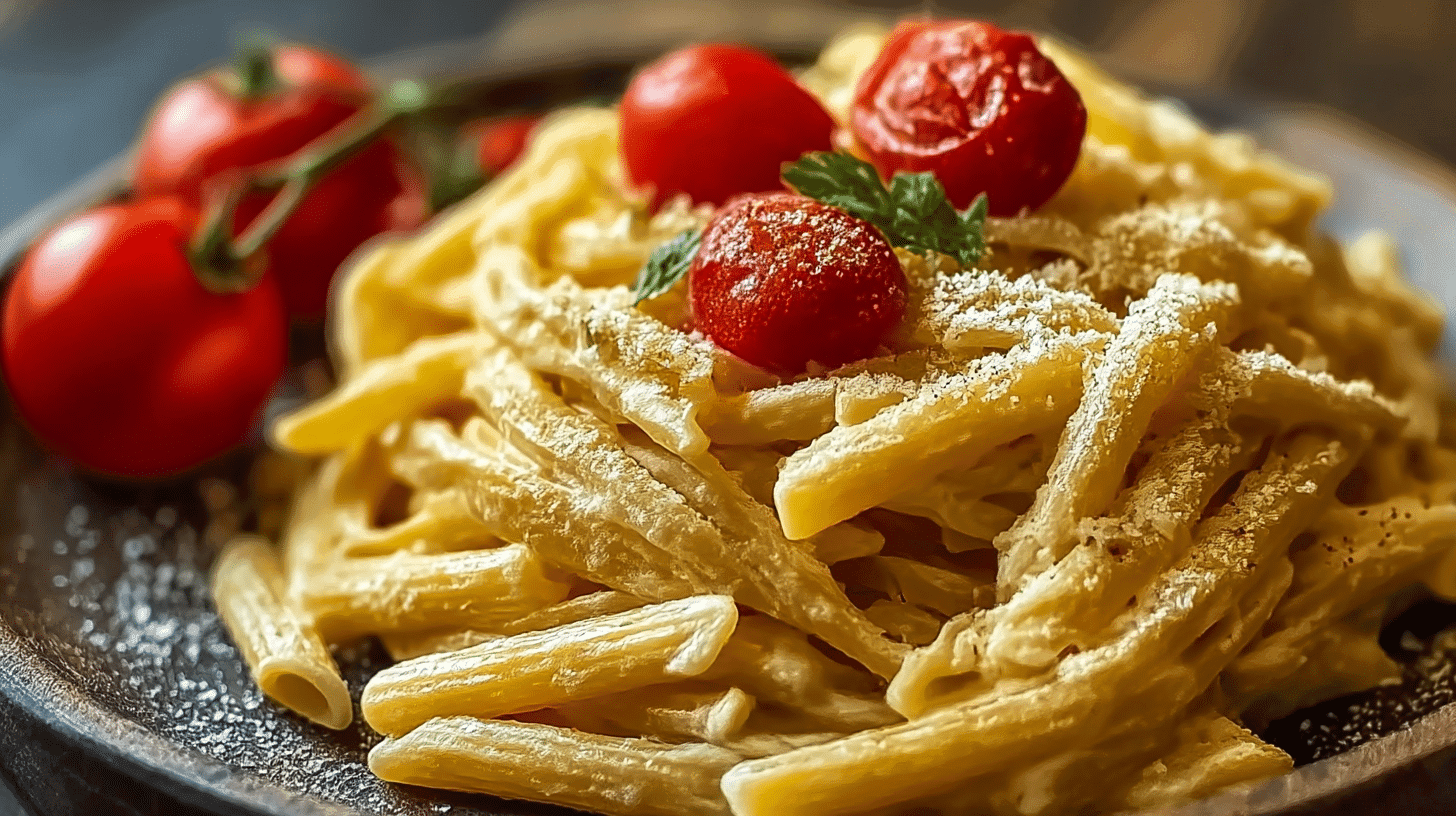Fresh pasta recipes have always been close to my heart because they connect me back to where this journey began. Hi, I’m Amanda — welcome to my kitchen at Beam Recipes. I’m 50 years old, and my story with food started beside my grandmother, learning that simple meals carry the most meaning. After years of rushing through dinners, I found myself returning to cooking as a way to heal and reconnect. What began as jotting down comforting dishes slowly grew into HealthyMealRecipe, where I now share approachable meals — especially chicken favorites — with Lina by my side, keeping things joyful and real.
Why These Fresh Pasta Recipes Work
Fresh Pasta vs. Store-Bought
Store-bought pasta is fine on a busy night, but nothing compares to the soft bite of fresh noodles. Homemade pasta clings to sauce in a way that feels indulgent without being complicated.
The Comfort of Homemade Food
When life feels hectic, making something from scratch brings a sense of calm. Kneading dough has a rhythm that settles you, and watching your family light up at the table makes the effort worth it.
Saving Time with Simple Ingredients
The beauty of fresh pasta is its simplicity. You need just flour, eggs, and a pinch of salt. In less than an hour, you’ve got a meal that feels like a celebration.
The Rewarding Family Meal
Fresh pasta recipes aren’t just about food. They’re about gathering, sharing, and building memories. It’s one of the most rewarding meals you can bring to the table.
Ingredients
- 2 cups all-purpose flour
- 3 large eggs
- ½ teaspoon salt
- 1 tablespoon olive oil (optional, for richer dough)
- Extra flour for dusting
Tabdiulat (Substitutions & Options)
- Flour Substitutions:
- Use bread flour for a chewier texture.
- Use “00” Italian flour for silkier, restaurant-style pasta.
- Gluten-free flour blends (with xanthan gum) can be swapped for regular flour.
- Egg Substitutions:
- For egg-light dough, use 1 egg + 2 tablespoons olive oil + ¼ cup water.
- For vegan pasta, replace eggs with ½ cup warm water and 1 tablespoon olive oil.
- Flavor Add-ins:
- Pureed spinach, beet, or carrot for colorful pasta.
- Finely chopped herbs like basil or parsley mixed into the flour.
- Oil Options:
- Olive oil adds smoothness, but you can skip it.
- Substitute with avocado oil or sunflower oil if preferred.
Cooking Instructions
Step 1: Measure out two cups of flour and place it in a mound on a clean counter. Make a well in the center and crack in three large eggs. Sprinkle with a pinch of salt.
Step 2: Using a fork, gently beat the eggs, slowly drawing in flour from the sides. Keep working until a sticky dough begins to form.
Step 3: Gather the dough with your hands and start kneading. Press with the heel of your hand, fold, and turn. Continue for about 8–10 minutes until the dough is smooth and elastic.
Step 4: Wrap the dough in plastic or a clean towel. Let it rest on the counter for 30 minutes. This rest allows the gluten to relax, making the dough easier to roll.
Step 5: After resting, cut the dough into four pieces. Lightly flour your counter and roll out each piece as thin as you can. If you have a pasta machine, feed it through gradually until you reach the thinnest setting.
Step 6: Slice the rolled dough into your chosen shape—fettuccine, tagliatelle, or even wide pappardelle ribbons. Dust the cut pasta with a little flour to prevent sticking.
Step 7: Bring a large pot of salted water to a boil. Drop in the pasta and cook for 2–3 minutes until al dente. Fresh pasta cooks much quicker than dried.
Step 8: Drain the pasta and toss it immediately with your favorite sauce, olive oil, or a sprinkle of parmesan cheese.
Why It Works
The Egg and Flour Ratio
The classic ratio of one egg to every half cup of flour is time-tested. It creates dough that is rich, yet pliable.
Kneading for Texture
Kneading develops gluten, giving pasta its structure and chew. Without it, the noodles would fall apart in boiling water.
Resting the Dough
Resting allows the dough to hydrate evenly and the gluten to loosen. This step makes rolling out thin sheets so much easier.
Rolling and Cutting Techniques
Even thickness is the secret to even cooking. Whether you roll by hand or machine, keep the sheets consistent for pasta that cooks uniformly.
Cooking to Al Dente
Fresh pasta cooks in minutes. Pulling it from the water when still slightly firm ensures the perfect bite and keeps it from turning mushy.
Variations and Adaptations
Spinach or Beet Pasta
Add pureed spinach for green noodles or beet for a striking red. These versions look beautiful and add subtle flavor.
Gluten-Free Version
Use a gluten-free flour blend with xanthan gum. The texture will be slightly different, but the joy of fresh pasta is still there.
Kid-Friendly Shapes
Kids love cutting dough into fun shapes with cookie cutters. It turns dinner into playtime, and they’re more likely to eat what they helped make.
Flavor Additions
Garlic powder, cracked pepper, or fresh herbs can be kneaded into the dough. Small changes bring bold character.
Seasonal Pairings
Pair your pasta with sauces that match the season—fresh tomatoes in summer, hearty ragù in winter. The pasta adapts beautifully to the rhythm of the year.
Mistakes and Fixes
Too Sticky or Too Dry
If your dough feels sticky, dust with more flour. If too dry, add a teaspoon of water at a time until it comes together.
Over-Kneading
Ten minutes is enough. Kneading longer can make the dough tough and harder to roll out.
Dough Not Resting Long Enough
Skipping the rest leads to springy dough that resists rolling. Always give it at least 30 minutes.
Cutting Too Thick or Too Thin
Cut evenly. Thick noodles take longer to cook and may taste gummy, while thin ones break apart in boiling water.
Overcooking in Water
Fresh pasta needs just a couple of minutes. Taste as you go and pull it early for the perfect texture.
Frequently Asked Questions
Can I freeze fresh pasta?
Yes. Lay cut pasta on a tray and freeze until firm, then store in bags. Cook straight from frozen, adding just one extra minute to boiling time.
Do I need a pasta machine?
No. A rolling pin works fine, though a machine gives more consistent thinness and saves effort.
How long does fresh pasta cook?
Usually 2–3 minutes. Taste often—overcooking happens fast.
What sauces pair best?
Fresh pasta pairs beautifully with light sauces like butter and sage, or heavier ones like Bolognese. Its tender texture makes every sauce shine.
note final Encouragement
If you’ve ever doubted yourself in the kitchen, making fresh pasta can change that. It doesn’t demand perfection. It simply asks you to be present—to knead, to roll, to share. The joy is in the process, not just the result. I’m always thrilled when I watch my family twirl forkfuls of homemade noodles, knowing it came from a quiet moment at my counter. You deserve that feeling too. Pull out the flour, crack a few eggs, and let dinner tonight remind you how much comfort you can create with your own two hands.

Fresh Pasta Recipes
Equipment
- Mixing Bowl
- Rolling Pin or Pasta Machine
- Large Pot
- Knife or pasta cutter
Ingredients
Main Ingredients
- 2 cups all-purpose flour plus extra for dusting
- 3 eggs large
- 1/2 tsp salt
- 1 tbsp olive oil optional, for richer dough
Instructions
- Place flour in a mound on the counter. Make a well in the center, add eggs, salt, and olive oil (if using).
- Beat the eggs gently with a fork, gradually incorporating flour from the sides until dough begins to form.
- Knead dough for 8–10 minutes until smooth and elastic. Wrap in plastic or a towel and rest 30 minutes.
- Cut dough into 4 pieces. Roll each piece thinly with a rolling pin or feed through a pasta machine to desired thickness.
- Slice into desired shapes (fettuccine, tagliatelle, pappardelle). Dust with flour to prevent sticking.
- Bring salted water to a boil. Cook fresh pasta for 2–3 minutes until al dente.
- Drain and toss with your favorite sauce, olive oil, or parmesan cheese. Serve immediately.

